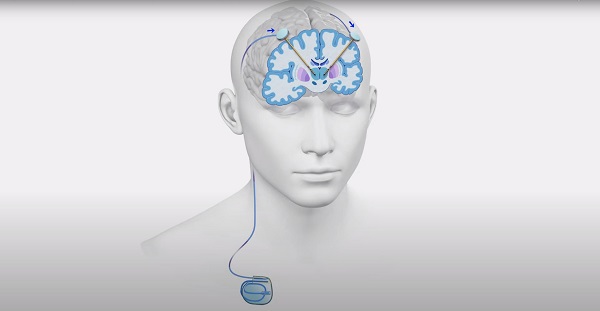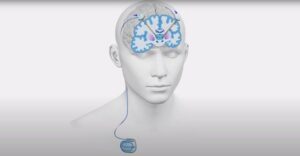How Deep Brain Stimulation Surgery is Transforming Neuroscience
4 min read
The field of neuroscience has always been at the crossroads of complex biological structures and the pursuit of technological interventions. A particularly striking manifestation of this marriage of biology and technology is the advent of Deep Brain Stimulation Surgery (DBS). This revolutionary procedure is having a profound impact on the approach and treatment of a variety of neurological conditions.
Unraveling the Concept – Deep Brain Stimulation Surgery
Deep Brain Stimulation Surgery is a radical medical procedure in neuroscience that involves direct electrical stimulation of the brain. Its applications are diverse and transformative, especially for debilitating neurological and neuropsychiatric conditions. In essence, DBS involves implanting a device known as a neurostimulator, commonly referred to as a ‘brain pacemaker,’ that sends out electrical impulses to specific brain areas.
The development of DBS and its subsequent adaptation as a treatment modality has opened new vistas in patient care. It has proven particularly effective in alleviating symptoms of diseases such as Parkinson’s disease, dystonia, essential tremor, and obsessive-compulsive disorder. This capacity to effectively modulate brain activity and alleviate debilitating symptoms makes DBS an indispensable tool in modern neurology.
Emergence and Evolution of DBS
Deep Brain Stimulation Surgery, although a cornerstone of present-day neurosurgery, is a relatively recent addition to the medical toolbox. The genesis of DBS can be traced back to the late 20th century. However, its widespread acceptance and implementation have occurred within the past two decades.
The refinement and evolution of DBS have been driven by continuous improvements in imaging technology and device design. These advancements have contributed to a better understanding of the brain’s intricate architecture, facilitating greater precision in identifying target areas for stimulation and the placement of the neurostimulator.
Also See: Brain Blood Clot: Symptoms & Treatment
Deep Dive into the DBS Procedure
A detailed understanding of the DBS procedure further underscores its transformative nature. During the surgery, electrodes are implanted into predetermined brain regions, guided by sophisticated imaging techniques. These electrodes are then connected through a thin wire to a neurostimulator device, typically positioned under the skin in the upper chest area.
The neurostimulator generates electrical impulses that are transmitted to the target brain regions, modulating the neural activity within these areas. The surgery is conducted under local or general anesthesia, and the exact stimulation parameters can be adjusted post-surgery. This flexibility allows the healthcare team to optimize the therapeutic benefit while minimizing potential side effects, thereby ensuring a patient-centric approach.
Impact of DBS on Patient Lives
The impact of DBS on patient lives is transformative, to say the least. By effectively managing previously unmanageable symptoms, such as tremors, rigidity, and obsessive thoughts, DBS provides patients with a newfound sense of control over their bodies and their lives. This transformation often extends beyond physical symptoms, leading to improved psychological well-being, enhanced self-esteem, and a marked improvement in overall quality of life.
Furthermore, for many patients, DBS offers a viable treatment option when medication therapy has failed or when side effects are intolerable. This can provide a glimmer of hope for those patients who, prior to the advent of DBS, were faced with the prospect of living with uncontrolled symptoms.
Exciting Future of DBS in Neuroscience
Deep Brain Stimulation Surgery, despite its current success, is still a developing field with considerable potential for growth and refinement. Ongoing research is exploring its utility in managing other neurological and psychiatric conditions, including depression, Tourette syndrome, chronic pain, and even Alzheimer’s disease.
One exciting development in the realm of DBS is the emergence of closed-loop DBS systems. These advanced systems can monitor brain activity in real-time, adjusting stimulation parameters accordingly. This presents a significant advancement towards personalized neuromodulation therapy, which promises even better patient outcomes in the future.
Also See: Kidney Transplant: What You Need to Know
Transformative Impact of Deep Brain Stimulation Surgery
To summarize, Deep Brain Stimulation Surgery stands as a testament to how neuroscience has revolutionized the approach to managing neurological and neuropsychiatric disorders. DBS is a beacon of hope for patients whose lives are marred by diseases previously considered untreatable or unmanageable.
Leading institutions like Nanavati Max Hospital are spearheading this revolution, employing advanced DBS techniques to enhance patient outcomes and overall quality of life.
The future of DBS, albeit still unfolding, offers exciting prospects for the treatment of a broad spectrum of brain-related disorders. As we continue to delve into the mysteries of the brain and refine our technological prowess, procedures like DBS will undoubtedly take center stage in transforming patient care and propelling the field of neuroscience into uncharted territories.






